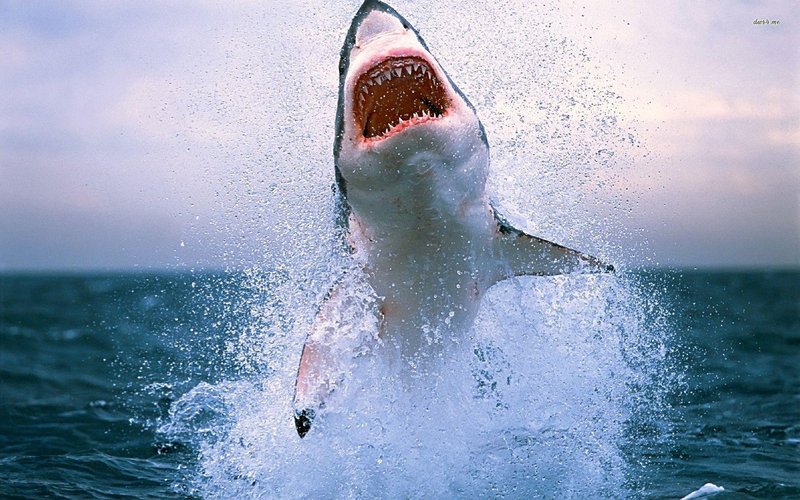
So, let’s dive in and unravel some of these myths and cultural beliefs about the great white shark. Think of it like peeling an onion—layer by layer, we’ll get to the juicy truth (without any tears!). Understanding these myths not only helps us appreciate the great white but also allows us to see them in a new light—one that shines on their ecological importance and unique behaviors.
Myth 1: Great White Sharks Are Man-Eaters
This myth is perhaps the most widespread. Thanks to films like *Jaws*, many people believe that great white sharks are ruthless killers who see humans as their next meal. Honestly, that couldn’t be further from the truth!
While it’s true that great whites are capable of powerful predatory behavior, they don’t actively hunt humans. In fact, most attacks are likely cases of mistaken identity. When a great white bites a surfer, it may be confusing them for a seal, which is more commonly on the menu. Typically, sharks bite to evaluate their prey, and once they realize a human is not what they expected, they usually swim away. So, while the fear of these sharks is prevalent, the reality is that they don’t specifically target us.
Moreover, great whites are often misunderstood. They play a vital role in maintaining the balance of marine ecosystems. By keeping populations of seals and other prey in check, they help ensure the ocean remains healthy.
Myth 2: Great Whites Are Aggressive Towards Humans
You might be wondering if great whites are just naturally aggressive. The short answer is “not really.” While they are powerful predators, their behavior towards humans is often misinterpreted. In reality, they are curious creatures that may approach people out of interest rather than aggression.
Studies show that great whites usually display a cautious demeanor. They rely on their keen senses to explore their environment. If they spot a person in the water, they might swim closer to investigate. Over time, researchers have noted that the majority of interactions do not lead to aggressive behavior.
These sharks are significantly more threatened by human activities than we are by them. Overfishing and habitat loss are major concerns for their survival. So, rather than seeing them as enemies, it’s essential to recognize their vulnerable status and protect their habitats, ensuring these magnificent creatures continue to thrive.
Myth 3: Great Whites Are Killing Machines
You’ve probably heard the term “killing machine” thrown around when it comes to sharks, especially great whites. But labeling them this way does a disservice to their complexity and intelligence. Sharks, including great whites, are crucial for marine biodiversity, and they play an enormous role in the health of our oceans. Think of them as the ocean’s “clean-up crew”—keeping populations in check and ensuring that ecosystems remain balanced.
Great whites help regulate species populations, which contributes to the overall health of the underwater environment. Without them, ecosystems could become overrun with weaker species. Imagine if you had no one managing your garden; things might get a little out of control!
Understanding great whites in this context helps shift the narrative from one of fear to one of awe and appreciation. Instead of being cautious about swimming in waters where these creatures reside, we can advocate for their protection and conservation—allowing them to continue their essential role in marine life.
Myth 4: All Sharks Are Dangerous
While great whites get a lot of attention, it’s important to clarify that not all sharks are dangerous. In fact, there are over 500 species of sharks, and many pose little to no threat to humans. For instance, the whale shark and basking shark are gentle giants that feast on tiny plankton and are harmless to people.
This myth often contributes to the fear surrounding all shark species, but the truth is that most sharks will avoid humans. With only a handful of species accounted for in unprovoked attacks, understanding that not all sharks are hostile can help us appreciate their diversity.
If you’re ever lucky enough to see a shark while swimming or diving, recognize the moment for what it is—a chance to observe an incredible animal in its natural habitat. In many cases, these encounters can offer a better understanding of and respect for ocean life.
Myth 5: Great Whites Are Primitive and Unchanged
There’s a misconception that sharks, including great whites, have remained unchanged since the time of the dinosaurs. While it’s true that they have existed for millions of years, the idea that they are “living fossils” is misleading. Sharks have adapted over time, evolving with their environment.
For example, great whites have developed unique hunting strategies and social behaviors that showcase their intelligence. They can learn from their experiences in the wild. Studies have shown that they can even remember where to find food sources or avoid areas with high fishing activity.
Recognizing that great whites are not static but dynamic creatures reminds us that they deserve our respect and protection. It also highlights their importance in the evolutionary story of life in our oceans.
Myth 6: Great Whites Are Always Found in Warm Waters
Many believe that great whites thrive only in warm coastal waters, but this isn’t entirely accurate. Great whites are found in a variety of environments, from the chilly waters of the Pacific Northwest to the warmer coasts of California and South Africa. They can adapt to different temperatures, which is crucial for their survival.
These sharks are known to migrate long distances, often traveling thousands of miles in search of food or suitable breeding grounds. Their adaptability is impressive and speaks to their resilience as a species.
Understanding their migratory patterns helps us appreciate their life cycle and the challenges they face in different environments. Protecting their habitats, regardless of temperature, is vital for their ongoing survival.
As we’ve explored these myths and cultural beliefs about the great white shark, it’s clear that what we think we know is often shaped by fear and misunderstanding. These majestic creatures are not the ferocious monsters of Hollywood, but rather misunderstood animals that play a critical role in our ocean ecosystems.
Instead of fearing them, it’s time to advocate for their conservation. By recognizing their value in maintaining marine biodiversity and understanding their behavior, we can appreciate great whites for the incredible species they are. As we learn more and challenge the myths that surround them, we open the door to coexistence and protection, allowing future generations to marvel at these magnificent sharks.

